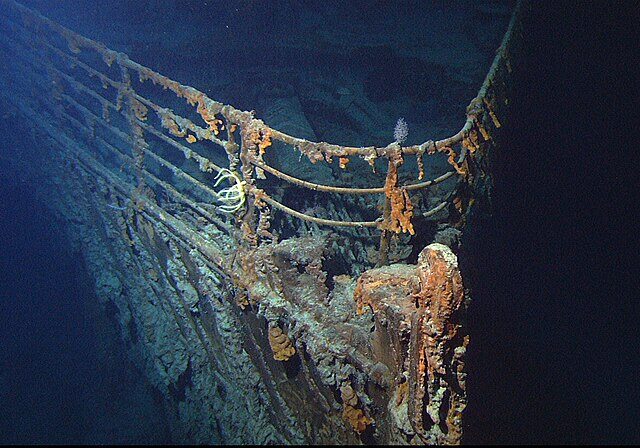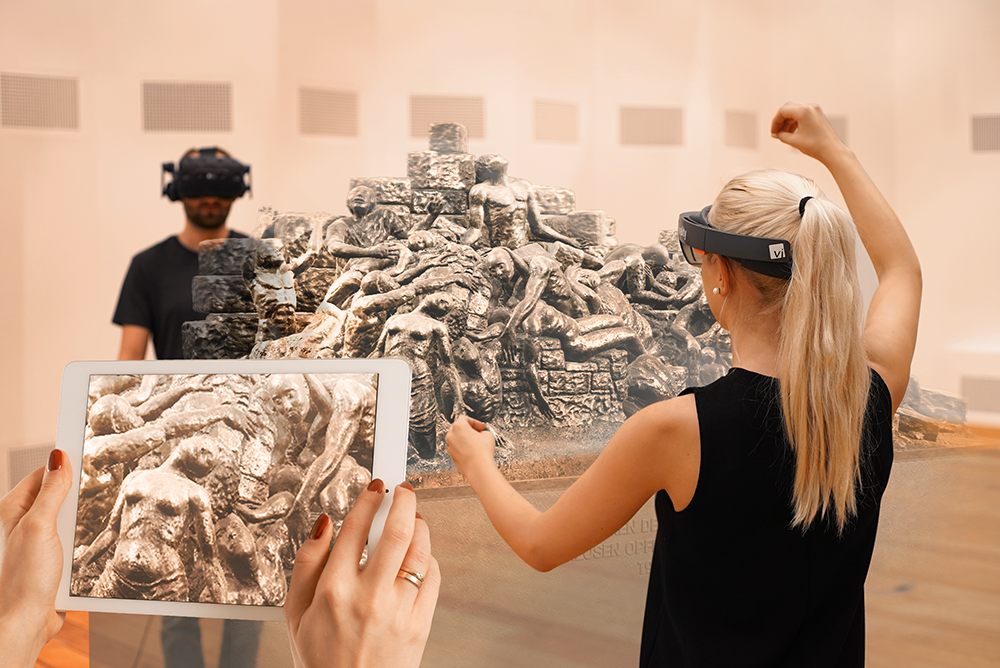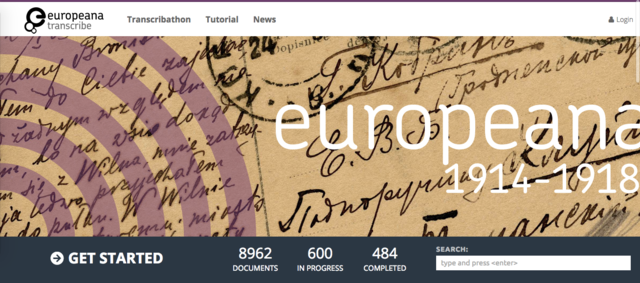.png?width=1280&height=720&name=Training%20a%20custom%20model%20v2%20(1).png)
What is cultural heritage?
Ever wondered whether your grandfather’s old diaries or the ancient manuscripts in your library hold any cultural significance? Cultural heritage, encapsulating the richness of our past, unveils the profound meaning woven into these artefacts.
If you are interested in history, you have probably come across the term ‘cultural heritage’ more than once. Most people think of arts, historical monuments and buildings or archaeological sites as cultural heritage, i.e. cultural property that can be touched. However, there is much more to the term: cultural heritage can be defined as property belonging to a specific community such as culture, values and traditions worth passing on to future generations because of their heritage values, or in other words, their cultural significance.
But what does Transkribus have to do with this? Imagine yourself exploring the dusty attic of your old family home or the long rows of bookshelves in a library or archive filled with time-worn manuscripts, each page holding a piece of our cultural heritage. With Transkribus, a digital time-traveler of sorts, you can transform your attic, library or archive into a digital wonderland with a click, revealing hidden tales that resonate with the heartbeat of our shared history.
Transkribus has the mission to provide all the tools you need to preserve your cultural heritage and that of other cultures by deciphering and digitising historical documents as well as making them available for research and the public. So in this post we want to explain what cultural heritage is and why it is important to protect it, before outlining what role Transkribus plays in its preservation.
Types of heritage
Cultural heritage manifests itself in various forms. The most common categorisation distinguishes between two cultural heritage types: tangible and intangible.
Tangible cultural heritage
Tangible heritage — cultural property that you can touch — includes movable, immobile and underwater physical artefacts. Movable cultural heritage (MCH) can be works of art, clothing, machines, books and documents, and other movable artefacts, while immobile cultural heritage (ICH) encompasses monuments, buildings or archaeological sites. A prominent example of underwater cultural heritage (UCH) is shipwrecks such as the RMS Titanic.
Intangible cultural heritage
Intangible heritage on the other hand is a much vaguer concept: as the name suggests, intangible heritage cannot be touched, it is more about ideas, practices and skills. It can range from literature to rituals to certain forms of craftsmanship handed down by previous generations. It is interesting to note that cultural assets considered intangible heritage, such as skills, are often closely linked to physical artefacts, sites and monuments, meaning that intangible heritage can be embedded in cultural and natural heritage assets.

You may wonder now: can ancient texts, scripts, handwritings, etc. be counted as tangible or intangible heritage? Most definitions, including that of UNESCO, classify books and documents as tangible culture. However, the content they contain and the skills required to create them can be considered intangible heritage. Since intangible culture can be embedded in physical items, one could argue that literature, books or manuscripts can be both, depending on whether they are considered as historical artefacts or as the knowledge they contain.
The importance of protecting cultural heritage
But why is cultural heritage important, and why does it need to be protected and preserved? For one thing, cultural heritage establishes identity and enables people to participate fully in social and cultural life. Additionally, safe-keeping cultural heritage can help us understand historical processes and learn from the past to better be able to solve and prevent problems we might encounter. This is why the preservation of tradition, cultural diversity, social customs, natural environment and all other kinds of cultural assets is crucial.
How can cultural heritage be protected?
Cultural heritage materials are vulnerable to numerous risks and dangers such as war and conflict, climate change, unsustainable tourism but also just natural deterioration or neglect. The latter is particularly true for cultural heritage in the form of historical documents, where access, preservation and research can be challenging when dealing with fragile material. A tool such as Transkribus is needed to digitise, transcribe and preserve historical documents. This will not only ensure the long-term preservation of these records but will also increase their accessibility to researchers, scholars and the public, thereby playing a key role in safeguarding our cultural heritage for future generations.
Archives, museums or libraries are all places that play a major role in conserving cultural assets by storing them in a way that keeps them from the worst deterioration and damage, while also partially making them available to the public for study and/or contemplation. What is more, built heritage conservation initiatives take care of cultural assets that cannot be kept safe within cultural institutions. At the same time, online archives or databases allow these safely stored assets to be accessed and explored, democratising knowledge, history and cultural heritage.
There are also several international organisations such as UNESCO that try to protect, preserve and promote cultural heritage by e.g. adopting conventions to support the development of policies for the protection of national heritage at state level. Lastly, a lot of cultural preservation work is also conducted at regional or local levels of society.
Yet these institutions and initiatives, whether at the international, national, regional or local level, need resources to protect cultural heritage effectively. Essential tasks such as transcription, archiving, research and preservation can be quite challenging to carry out manually. This is where technology comes into play.
The significance of digital technology for preserving cultural heritage
Digital technologies have long found their way into cultural institutions such as archives, museums, galleries and libraries . Whether it is 3D technology, artificial intelligence or virtual/augmented reality, the broad variety of the technologies used open up numerous possibilities to preserve and mediate culture. But how can digital technology help to preserve written cultural heritage?
Optical character recognition (OCR) — the conversion of digital scans of documents into searchable full-text — is an essential tool for cultural heritage institutions that want to make their written assets accessible to their visitors. Most conventional OCR systems are only able to recognise printed text and still deal with challenges such as non-Latin scripts and article detection. This is why adaptable Handwritten Text Recognition (HTR) solutions, such as Transkribus, have been developed over time. Transkribus’ AI-powered transcription software offers extensive features for processing the recognised printed or handwritten text in order to facilitate further study or even publication.

How does Transkribus contribute to preserving cultural heritage?
Transkribus enables you to not only automatically recognise text but also edit it afterwards. It can be as easy as taking a photo with your smartphone, uploading it to Transkribus, choosing the right recognition model for the language and script your historical document is written in and having it transcribed. The transcription editor with side-by-side view makes it easy to edit and correct the automatic transcriptions as well as to enrich them with metadata to enhance context understanding.
If you cannot find a suitable model for your type of document, don’t worry, we’ve still got you covered:
One of the features that makes Transkribus a useful tool for preserving cultural heritage is the possibility to train your own custom recognition model. This means that if you have documents with particularly difficult-to-read handwriting or non-Latin scripts, you can create and/or adapt a model that best suits your specific needs.
For research teams that work together on a project, it is also possible to collaborate on transcribing and/or editing historical documents, as document collections can be shared with others. The easiest way to search the culture-rich documents is to use the text search function to quickly find the information, words, names and places you are looking for.
And finally, you can publish your material online with Transkribus Sites. This feature allows either selected users or the general public to easily access and search your digital collection of historical documents, making it possible not only to preserve cultural heritage but also to make it accessible.
As you can see, Transkribus, with its numerous features and its user-friendliness, is the ideal tool for preserving historical content, researching it and making it available to the public. So start your cultural heritage protection project now with Transkribus, no matter if on your own or in collaboration. If you have never used Transkribus before, there are plenty of how-to guides on our website as well as video tutorials on YouTube.
Where has Transkribus already helped to save cultural heritage?
Transkribus has supported several cultural heritage protection projects, some of which are discussed in more detail below.
Europeana Transcribathon
The Europeana project was launched back in 2008 by the European Union. It aims to preserve pieces of cultural heritage, such as letters, portraits and official documents, from across the continent and make them accessible to the public in digital collections — the Europeana Collections.
The EnrichEuropeana+ project is a citizen science initiative with the objective of creating fully annotated digital versions of the Europeana Collections. To achieve this, volunteers from all over Europe transcribe and enrich handwritten sources using the Transcribathon platform.
Until recently, Transcribathon only allowed volunteers to transcribe documents manually. In 2021, however, Europeana and Transkribus joined forces to build a new version of the platform that would generate automatic transcriptions of the documents. These could then be proofread by the citizen scientists involved in the project. To learn the whole story, click here.

RetroDigitalisering
Another citizen science project that Transkribus has been used in is RetroDigitalisering led by the Aarhus City Archives in Denmark. Many small Danish archives have teamed up with the goal of digitising documents written in old Gothic handwriting using Transkribus. In workshops and through online resources the volunteers, who to a large part are of retirement age, learn how to use the software. RetroDigitalisering has also worked with history students at the University of Aarhus. The transcriptions produced by the volunteers are published on the project’s website for everyone to access. If you would like to learn more, you can find a presentation about the project by Anette Larner on YouTube.
The Digital Ottoman Corpora project
The Digital Ottoman Corpora project is focused on transcribing, digitising and analysing collections of Ottoman Turkish print. Due to its replacement with a latinised and turkified version in the late 1920s, Ottoman Turkish is today considered a ‘dead’ script, which is why documents written in it are only accessible to specialists, unless they are transcribed into ‘Modern Turkish’. With the aim of preserving and understanding Ottoman history, the Digital Ottoman Corpora project wants to improve accessibility to Ottoman Turkish historical archives and help create a digital research infrastructure for Ottoman Turkish. In this blog post you can read more about it.
Wikisource Loves Manuscripts
The Wikimedia Foundation — the nonprofit that operates Wikipedia, Wikisource and other free knowledge Wikimedia projects — and Transkribus have recently started an exciting collaboration. Since July 2023, Transkribus is used as a text recognition engine on Wikisource, an online digital library of public domain and freely licensed source texts as well as historical documents. The project that initiated the collaboration between Transkribus and Wikimedia is Wikisource Loves Manuscripts, which is inspired by the digitisation and transcription of historical Balinese manuscripts. Want to learn more about this successful example of preserving and sharing cultural heritage in the digital age? Follow this link.
As you have learned from this article, Transkribus is not just a software; it is a beacon in the digital preservation of cultural legacy. In its secure and easy-to-use design, our collective past is not only protected but made accessible for future generations.
Embrace Transkribus as the cornerstone of a digital renaissance in cultural preservation. Uncover, preserve, and share the stories that define us. Transkribus is the key to ensuring that the whispers of the past echo loudly in the digital corridors of our cultural heritage. So start unlocking the past now with Transkribus!
Thumbnail: Image from Monika Robak on Pixabay


.png?width=1280&height=720&name=Featured%20Image%20(11).png)